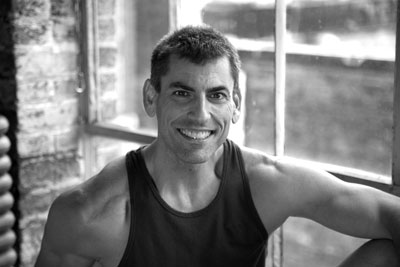
On the Death of Marathoners: What We Can Learn

By Jeff Horowitz
January 2012
New Years Eve is a good time to look back on highs and lows of the year just passed. For the running community, it's a bittersweet view.
On the bright side, road racing seems to be continuing its steady climb in popularity. A new marathon world record was set in the Berlin Marathon as Patrick Makau of Kenya shattered the 3-year-old mark (also set in the Berlin Marathon), by a whopping 21 seconds, lowering it to 2:03:38.
But on the somber side, 2011 was also one of the deadliest seasons in memory for long distance running. There were 5 fatalities reported in the popular press. A 37-year old man died shortly after completing the Dodge Rock 'n' Roll Half Marathon, a 27-year-old man died just 300 meters from the end of the Toronto Marathon, and a 32-year old man died just moments after finishing the Los Angeles Half-Marathon. In the Philadelphia Marathon, a 40-year-old man died just a quarter mile from the finish line, and a 21-year-old man died shortly after finishing the half-marathon.
What on earth is going on here?
Before we try to answer that question, it's important to keep some perspective. According to the industry group Running USA, there were a total of nearly 2 million finishers in U.S. marathons and half marathons in 2010, and approximately 13 million total finishers in races of all distances. It's clear that running remains one of the healthiest, safest activities that you can engage in.
But still, why these deaths, and why now? One reason might simply be that there are more marathon and half-marathon participants than ever before. With participation so high, the chances of a single fatality occurring in any given race must be greater than it used to be.
Plus, overall race finish times have been increasing -- a likely result of slower, less well-trained athletes competing. This means that the potential risk of a fatality to an under-trained or otherwise at-risk athlete is likely higher than it used to be.
But perhaps there is something else going on here. Perhaps increased caffeine consumption might be the culprit.
Caffeine is a stimulant that is safe when taken moderate doses. It's linked with lower risk of certain cancers, lower risk of diabetes and Alzheimer's, as well as with higher athletic performance. It's this last characteristic that has led manufacturers of sports supplements to load sports gels and drinks with higher and higher doses of caffeine.
None of this is a problem - until you reach the 200mg daily dose level, which is the equivalent of two cups of coffee. At that point, negative side effects of caffeine consumption kick in, including irritability, nervousness, insomnia, heart palpitations, and an increased risk of a "cardiac event."
That 200mg limit isn't hard to reach. Looking in my collection of gels, I spotted several samples that packed doses of 25-50mg per gel pack. I was shocked to see that one particular gel packet had 100mg! I was only half-joking when I told a friend that this should be a controlled substance.
Let's try to create one possible scenario for all of these racing deaths: Perhaps these runners had a latent heart problem that had gone undiagnosed. They each took up running, but may not have been properly prepared for the race they entered. On race day, perhaps they had a cup of coffee with their breakfast, and then took a sports gel every half-hour to hour during their event, leading to a total caffeine consumption of 400mg or more -- double the amount at which a risk of heart attack goes up.
The race goes well for each of these runners. They near the end of their race, and they get excited. They dig deep, feel a big adrenaline surge, and begin their big push to the finish line. Then each of these five runners collapses, each within a quarter mile of the finish line.
Maybe this is exactly how their races went. From what I've been able to gather from reports, we don't know if these runners even ingested caffeinated products, but we do know that these products are widely available, and that all of these athletes succumbed at the most emotionally charged moments of the race -- near to or at the finish line.
I find it especially sad that these tragic events occurred at what I consider to be a particularly life-affirming event. But with the proliferation of races and training programs, it's important to remember that running a marathon is a potentially life-threatening endeavor, and not to be taken lightly. As I wrote in my book Smart Marathon Training, every training program is, essentially, a plan for managing risk. Now would be a good time for all of us to review our training and racing programs to minimize risk as much as possible. As for me, I'm going to cut back on the heavily-caffeinated sports supplements. But I will still train and race, and I hope you will too.
Marathon Training
PVTC Track Series
Mary's Custom Quilts
Seashore Striders Summer 2001 Schedule
Joints In Motion
Team Diabetes
Fredericksburg Grand Prix
TrackCoach.com
Running Enclave
DC Fit
Fleet Feet - DC
Fleet Feet - VA&MD